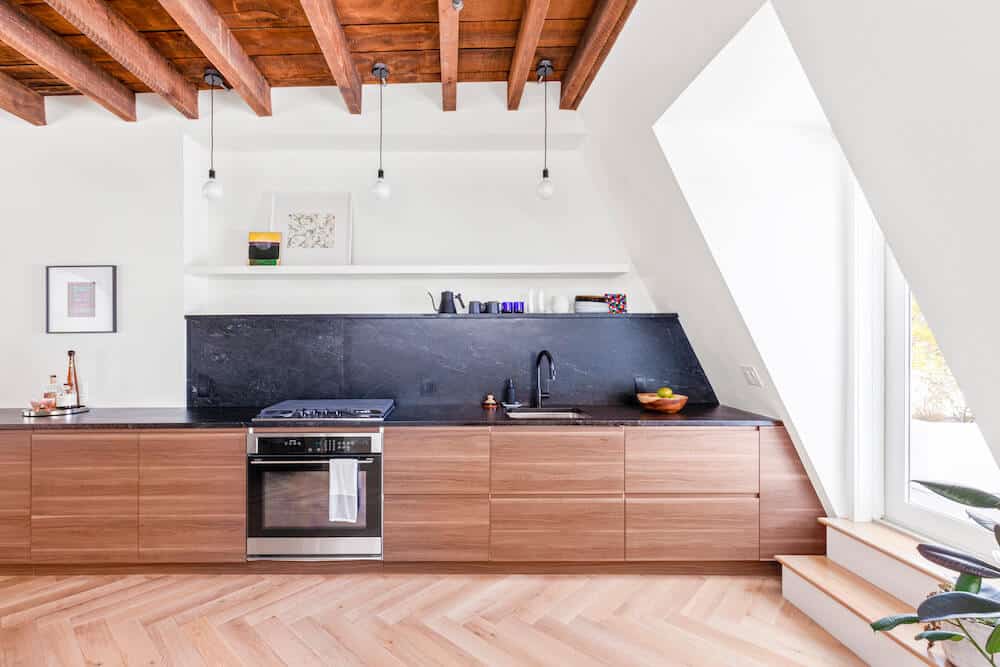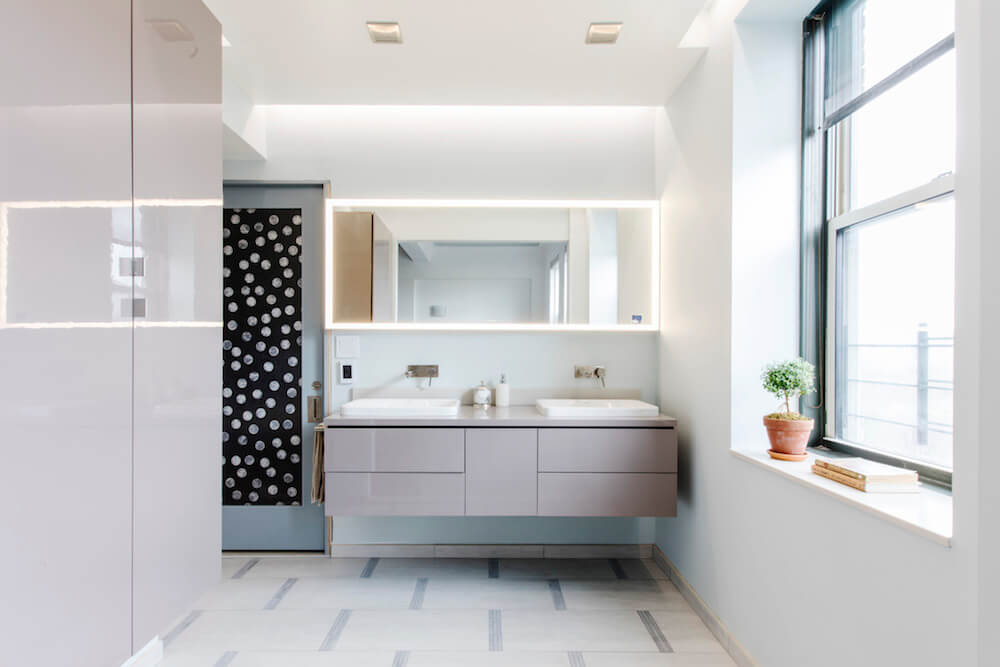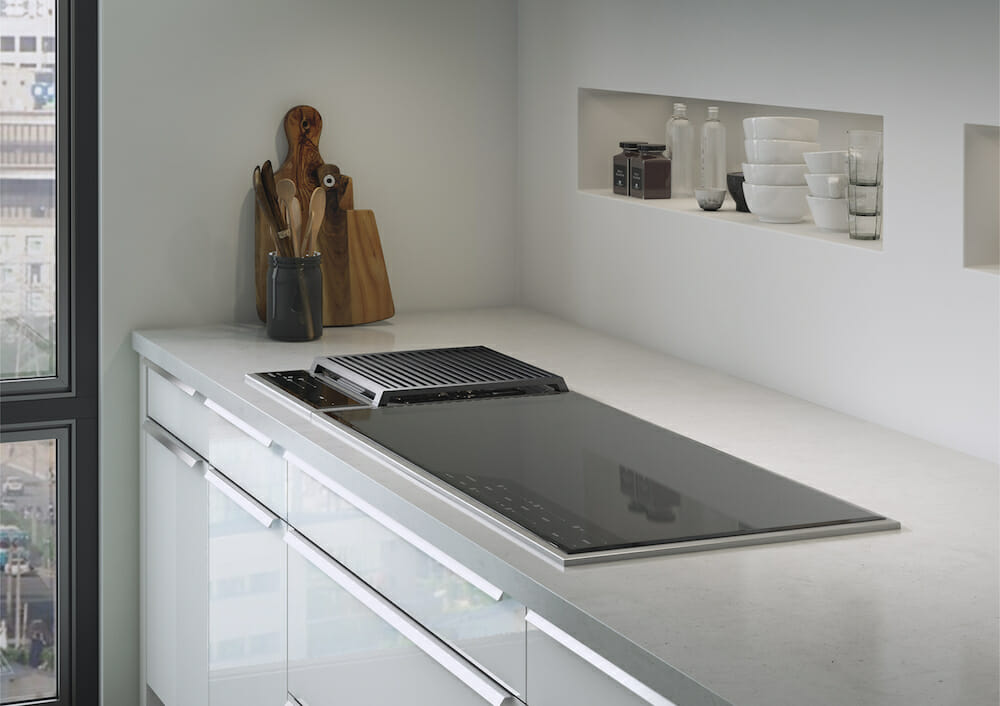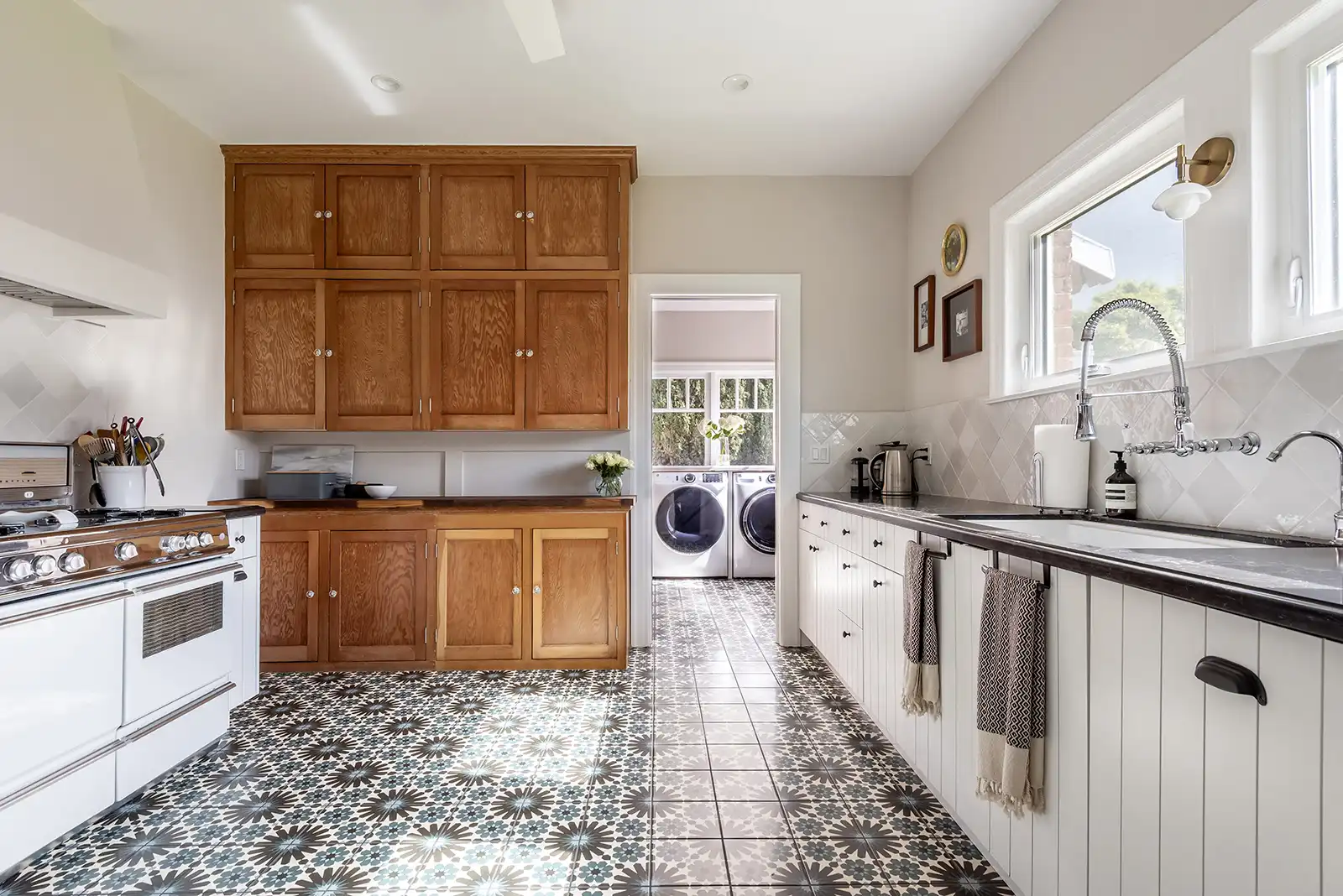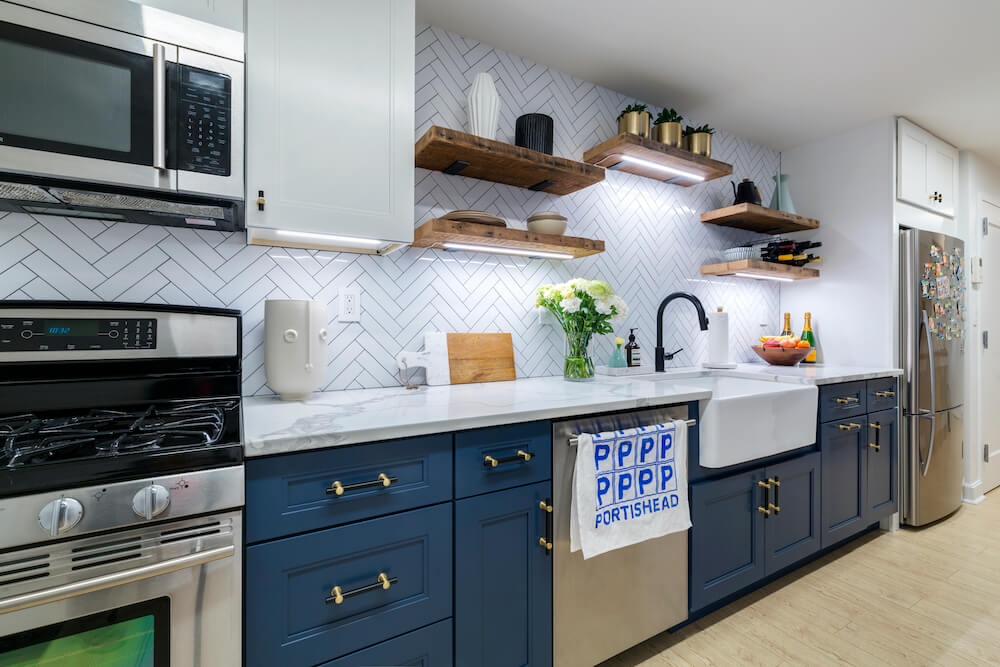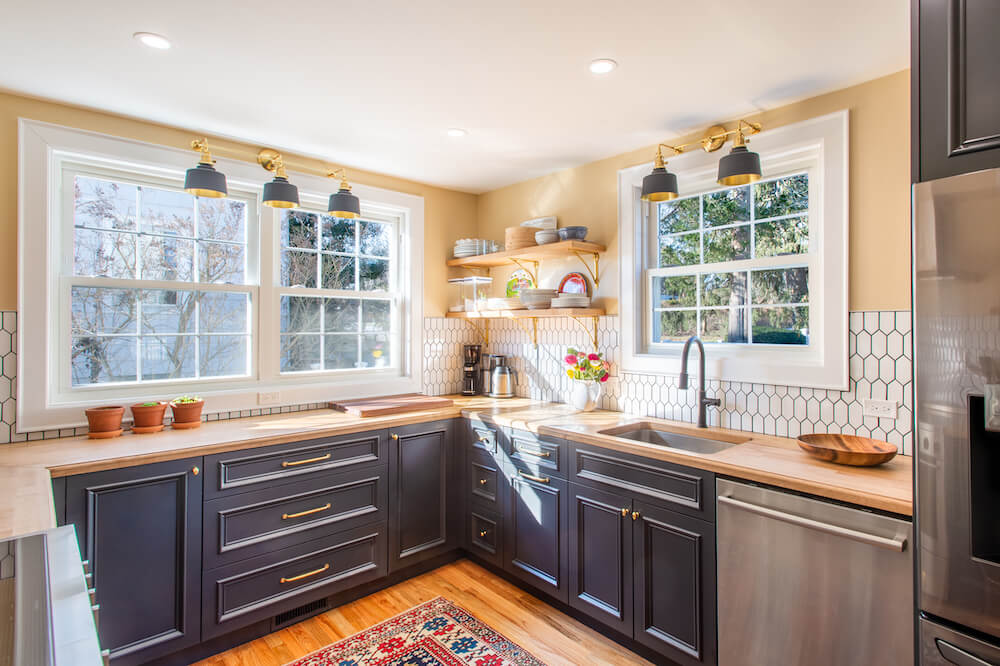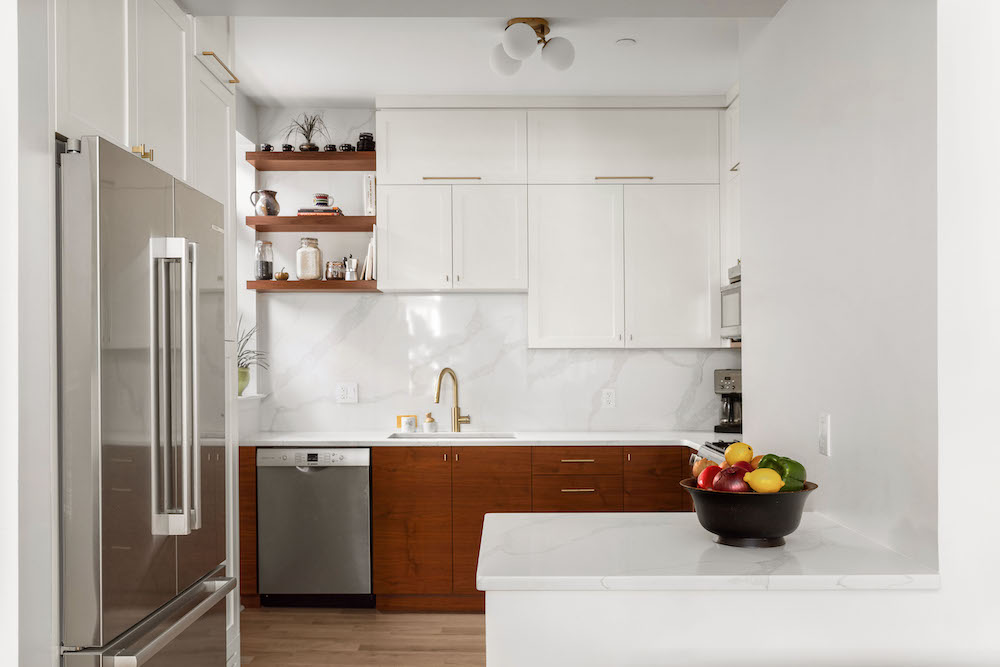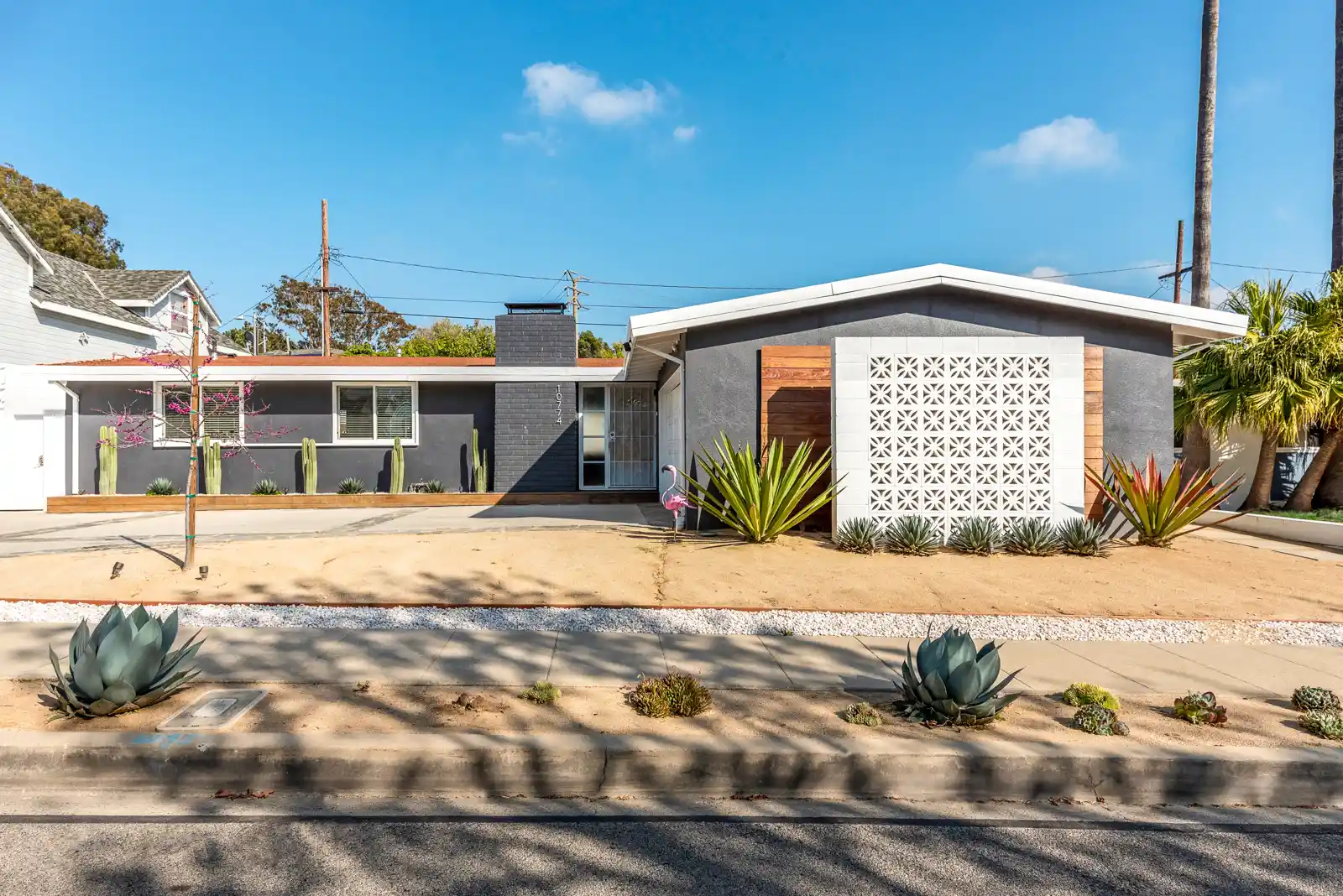Home / Blog / Home Renovation Process
The Complete Guide to Remodeling Your Kitchen in Los Angeles
Remodeling your Los Angeles kitchen can be a transformative adventure, but navigating building codes, permits, and finding the right professionals might feel like trying to find a parking spot on Rodeo Drive during rush hour. Fear not, this guide is your personal kitchen makeover guru! We’ll walk you through every step of the process, from budgeting and planning to selecting the perfect design team and materials.
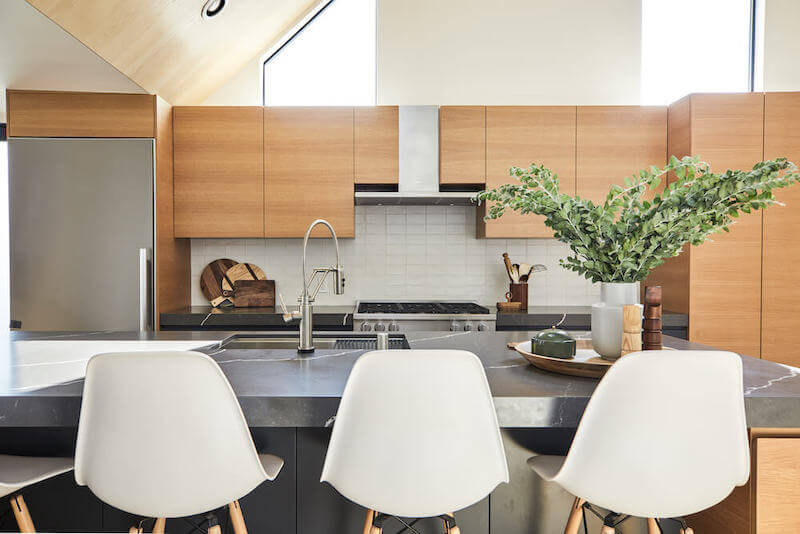
There are so many benefits to remodeling an outdated kitchen — increasing home value, improving functionality and energy efficiency, and best of all, the chance to create a space that you actually love! Living in Los Angeles, you may run into some unique challenges during a kitchen remodeling project, like strict building codes and compliance with Title 24 regulations for energy efficiency. Plus, costs for labor and permitting fees can be a little higher in LA than in other US cities. But with the right planning and contractor, getting to the finish line is easier than you think.
So, where do you start, and how do you stay sane in the process? Here’s our local guide to kitchen remodeling in Los Angeles, with everything you need to know.
At Sweeten, we’re experts at all things general contractors — we pre-screen them for our network, carefully select the best ones for your remodeling project, and work closely with hundreds of general contractors every day. So, we’ve tapped our internal expertise to bring you this guide.
Pre-planning and design research
First thing’s first: we always recommend approaching any remodeling project by outlining your must-haves and nice-to-haves. This will help you organize your ideas and have productive conversations with contractors around scope and budget. Think about your goals and lifestyle to come up with the right list. For instance, if you’re an avid cook with all the kitchen gadgets, but you also hate clutter, then plenty of smart storage may be a non-negotiable. And what about your minimalist vision of no upper cabinets? Put that on the nice-to-haves.
In this ideation phase, you can also start to think about what might be worthwhile splurges vs areas to save. Cabinets are a huge ticket item for most kitchen remodels. In Los Angeles, the cost of cabinets plus installation ranges from around $188 per linear foot for stock cabinetry, up to $600+ per linear foot for fine custom cabinetry. So start researching cabinet styles and brands that you think will mesh with your price point. We love IKEA cabinets for tighter budgets, Semihandmade cabinet fronts for mid-grade, and for higher-end, nothing beats custom cabinets.
Don’t limit yourself to internet research — LA is a home design playground, with plenty of local suppliers and showrooms that carry tons of options for cabinetry, tiles, countertops, flooring, and fixtures. So get out and explore! And with the area’s focus on sustainability, there are many options for eco-friendly appliances and materials that can help you reduce your carbon footprint and save on energy costs.
Organize your ideas in a sharable format. Use Pinterest, Instagram, or a folder on your desktop to start compiling photos (and pick up some samples from those showrooms). Use these visuals to narrow in on styles, colors, materials, layouts, and features you like, and prepare to bring them to meetings with contractors, architects or interior designers.
Budgeting and cost factors for kitchen remodeling in LA
Having a realistic budget from the beginning is crucial for a smooth kitchen remodel process. Our comprehensive Los Angeles kitchen remodeling cost guide provides detailed information on local costs and factors to consider.
The main cost variables for a kitchen remodel are:
- Size: The square footage of your kitchen directly impacts the cost.
- Finish level: The materials you choose, from countertops and cabinets to appliances and fixtures, will significantly influence the budget.
- Scope: The extent of the remodel, whether it’s a simple refresh or a complete gut renovation, affects the overall cost.
- Services: The services you require, such as design, demolition, construction, and installation, will contribute to the final cost.
For a quick estimate of costs in Los Angeles, here are approximate starting prices for a full renovation (without layout changes) of a medium-sized kitchen:
- Budget kitchen renovation: $28,000+
- Mid-grade kitchen renovation: $42,000+
- High-end kitchen renovation: $85,000+
Please note that these are estimated costs and may vary depending on specific factors such as location within Los Angeles, labor costs, and the complexity of your project.
When you post a project on Sweeten, we’ll use your budget range to connect you with top, vetted contractors in Los Angeles who work within your price point. If you’re unsure about your budget, we’re happy to discuss it with you before you start meeting with contractors.
Assembling your renovation team and choosing a contractor
Depending on your needs, you have some options for what types of professionals to hire. For more straightforward projects where layout won’t be changing and you have a good idea of the materials and style you want, your best bet will be to hire a general contractor. For more complex projects, or if you know you want professional design services, you can partner with an architect or interior designer in addition to your contractor — or, go hybrid with a design-build firm.
Our free matching service is perfect for anyone looking to hire a general contractor or design-build firm in LA. We’re also proud to work with several women-owned and minority-owned firms in the area.
Plan check and permitting in LA
You need a plan check and permit for most projects these days, so you’ll want to get acquainted with the LA Department of Building and Safety’s (LADBS) website. The plan check is a straightforward review of your design to ensure that it meets the building code. You’ll find an abundance of helpful information at the LADBS site, including: quick links to necessary forms, how to get an express permit for certain projects, and information about local contractor requirements.
Local regulations
There are several local building regulations in Los Angeles that can affect a kitchen renovation project. Sweeten brings homeowners an exceptional renovation experience by personally matching trusted general contractors to your project, while offering expert guidance and support—at no cost to you. Renovate to live, Sweeten to thrive!
- Building codes: The California Building Code (CBC) and the Los Angeles Building Code (LABC) set requirements for the construction, design, and safety in home remodels, including kitchens. These building codes specify the minimum requirements for construction, electrical, plumbing, and mechanical systems, which are enforced by the Los Angeles Department of Building and Safety (LADBS) via permits and inspections.
- Fire protection: Local building codes in LA also require adequate fire protection, including smoke detectors, fire alarms, and fire suppression systems such as sprinklers or hoods. If you’re installing new appliances or making other changes to your kitchen, you may need to update your fire safety systems to comply.
- Title 24: This is the California Building Standards Code, which outlines the building energy efficiency standards for new construction and major renovations in California. Kitchen remodeling projects must comply with Title 24 requirements for lighting, ventilation, and energy efficiency. More on Title 24 below.
What’s most important is that you work with a qualified contractor who is knowledgeable about these regulations to ensure that your kitchen renovation project meets all safety and legal requirements.
More on Title 24
According to the California Energy Commission, “Homes and businesses use nearly 70 percent of California’s electricity and are responsible for a quarter of California’s greenhouse gas emissions.” The State of California has standards in place to deal with high energy demand, and Title 24 is one way of doing that.
Title 24 is enforced by the local building department for your municipality, so you’ll need to know which department has jurisdiction for your property. You may have to make a few calls if you don’t know already, and you can look up your address with this tool as well.
Will Title 24 apply to my project?
If you’re concerned about slowdowns and additional process involved with Title 24, you may be able to circumvent it by avoiding work that is included within its purview. So if you don’t move walls or replace windows, you’re off to a good start. For a kitchen remodel, you may be able to replace the entire kitchen within the existing space, including new cabinetry and countertops. (This is called a “rip-and-replace.”) You may also be able to replace windows and doors with units of the same size.
If you’re updating the HVAC (heating/ventilation/air conditioning) system, your project will fall under Title 24 and you’ll be required to meet those standards. Changes to the building “envelope,” which are the exterior walls and roof, and changes to the layout inside your home, including moving walls, will be considered “alterations” and you’ll need to comply with Title 24 requirements as well.
Working within the confines of Title 24 is not impossible. Thousands of homeowners do it every year with help from their contractors and guidance from building inspectors. The best plan of action is to be prepared, especially as you choose your architect and contractor who have the expertise to navigate the process.
Timeline and process for a kitchen remodel
The timeline for a kitchen remodel in Los Angeles can vary depending on several factors, including the size and complexity of the project, the availability of materials and contractors, and any unexpected setbacks that may arise during the renovation process. On average, you could expect a typical kitchen remodeling project of low-to-moderate complexity to take about 3-6 months from start of the process to completion.
If permits are approved, design is complete, and there aren’t any delays on materials, then it could be just 3-8 weeks to complete the construction phase of your kitchen remodel — but, again, that depends on the size and scale of the kitchen project, complexity of plumbing and electrical, and whether there are changes to the layout, or any surprises during construction. More complex projects could take the construction phase up to a few months.
In the construction phase, your GC and subcontractors will follow a fairly standard order of tasks for a kitchen remodel, which can be grouped into the following steps:
- Site prep and demolition
- Installations
- Finishing
- Final walkthrough and punch list
Demolition and site prep
To protect the rest of the home during a kitchen remodel, a contractor will often seal off the kitchen area with plastic sheeting to prevent dust and debris from spreading. They may also install temporary walls or barriers to further contain the construction zone, and lay down protective covering on floors and other surfaces to prevent damage. You’ll want to talk with your contractor about their plan for protecting your home before the start of construction.
Then onto demolition. Clearing out your old kitchen involves removing everything from the existing kitchen, including appliances, cabinetry, and fixtures, and is usually done in a specific order to minimize any potential for damage. For a rip-and-replace, the drywall stays in place, but that’s about it. The rest goes into the dumpster, or in certain cases, can be donated for salvage. For a gut remodel, your GC will have the crew do the demolition down to the studs.
Typically, the old flooring will get ripped out at this point, leaving just the subfloor.
Once everything has been removed, the contractor will assess the condition of the walls, floors, and ceiling to determine if any repairs or updates are needed. Does anything need to change from the plan? What’s apparent that wasn’t expected? Remodeling work almost always gives you a few surprises! Your contractor will work through any necessary repairs or upgrades at this point to ensure your new kitchen is built on a stable and safe foundation.
Installations
Once the demolition and preparation phase is complete, the installation phase can begin. First, plumbing and electrical work involve installing new pipes, wiring, and outlets as needed for new appliances and fixtures. The contractor will work with licensed subcontractors to ensure that all work is up to code and meets safety requirements.
Then the new wall texture and/or paint goes on, followed by the new cabinets. New flooring usually goes in after new cabinets, but it depends on the project. At this point the GC will be scheduling a few subcontractors in a specific order. The new countertops go in before the plumber and electrician can finish. The lighting professionals follow. The sequence for appliances isn’t so crucial, but they’re usually among the last items installed in the kitchen.
Keep in mind, this entire sequence is a guideline, not a rigid list. The job of a skilled general contractor requires flexibility and problem solving — they need to juggle a handful of variables in motion on every project.
Finishing
Tasks that are usually done in the finishing stage of a kitchen remodeling project include installing a backsplash, applying paint or wallpaper, adding trim and molding, installing hardware such as handles, pulls and knobs, and installing lighting fixtures. This is also the phase where any final adjustments or tweaks are made to ensure that everything is functioning properly and looks the way it should.
Final walkthrough and punch list
After the finishes are in, you’ll have the opportunity to do a final walkthrough with your contractor to identify any issues or items that need to be addressed before the project can be considered totally complete.
During the final walkthrough, you’ll make a checklist of any outstanding items that need to be addressed — the punch list. This can include things like touch-up painting, adjusting cabinet doors, fixing minor plumbing or electrical issues, or any other small tasks that were missed during the course of the project. Once all the items on the punch list have been addressed, the project can be considered officially complete (from which point, you enter the celebration phase!).
Tips for surviving your kitchen remodel in Los Angeles
No matter how prepared you are, remodeling your kitchen will be a challenging experience. But there are a few things you can do to make the process a little easier on yourself and your family:
- Create a temporary kitchen. Set up a small kitchenette in another area of your home like the dining or living room so you can prep basic meals for the duration of your project. Think microwave, toaster oven, and mini-fridge. You can also take advantage of the beautiful LA weather and grill your meals. Stock up on non-perishable foods and make a plan for plates, glasses, and utensils.
- Manage expectations. The remodeling process will be messy and disruptive. Be prepared for some delays and unexpected challenges along the way, and stay flexible and adaptable in your plans. If you live in an apartment, you may also want to help manage your neighbors’ expectations, and communicate about any aspects of your project that might affect them.
- Maintain open communication with your contractor. This can’t be understated. Regular check-ins and updates can help ensure that the project stays on track and that any concerns or issues are addressed promptly. It’s also important to establish clear boundaries and expectations upfront, such as when the contractor will be on-site and what areas of the home they will have access to.
We can help plan your renovation
Find endless home renovation inspiration, detailed guides, and practical cost breakdowns from our blogs. You can also post your project on Sweeten today and get matched with our vetted general contractors and get estimates for free!
FAQs
- Durability: Opt for materials that can withstand daily use and are easy to clean.
- Style: Select materials that complement your desired kitchen aesthetic and personal preferences.
- Hire a reputable contractor: Choose a contractor with experience in kitchen remodeling and positive reviews. You can use Sweeten to match renovators with vetted general contractors for free.
- Create a detailed plan: Outline your project goals, timeline, and budget to avoid unexpected delays or cost overruns.
